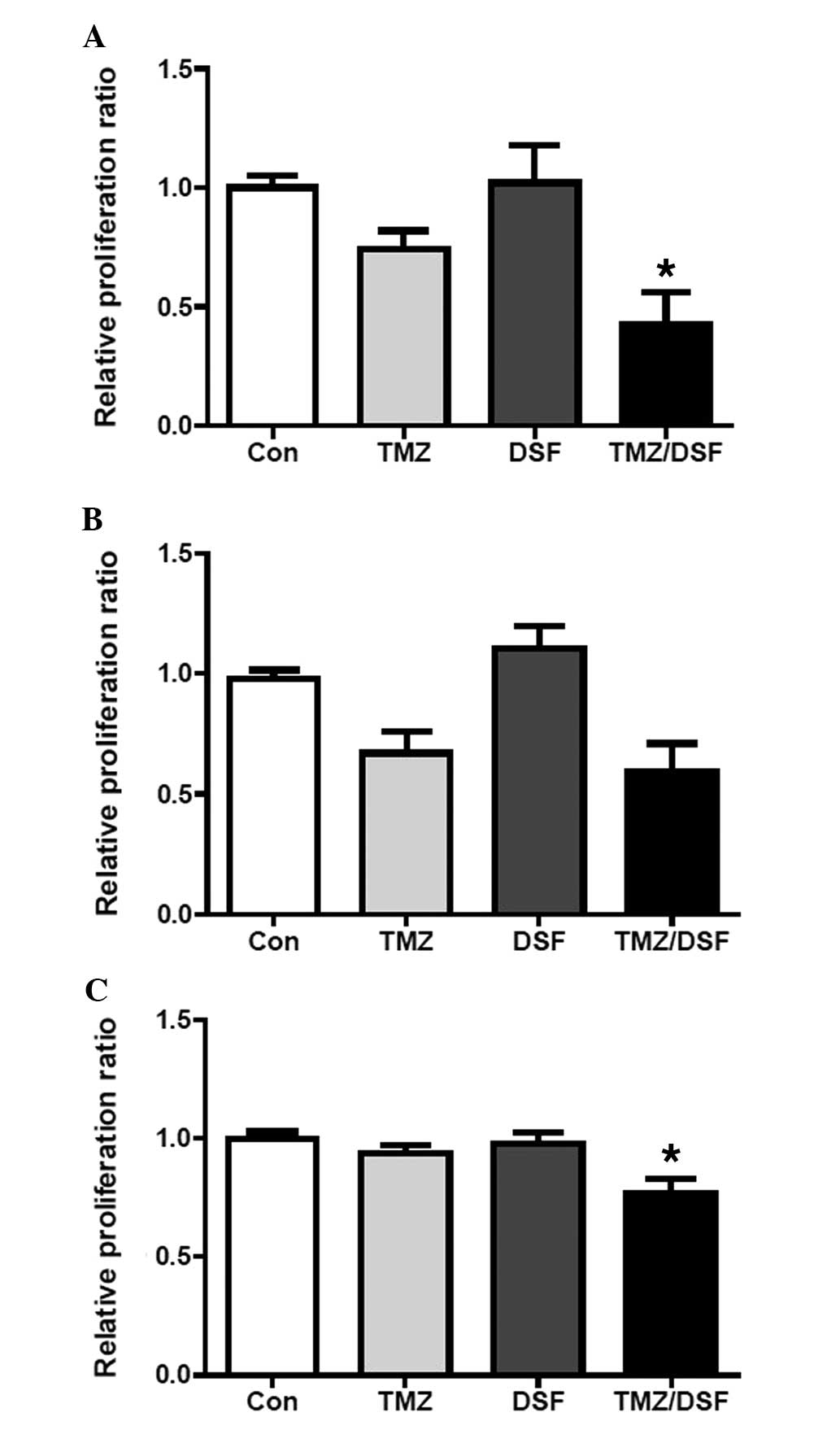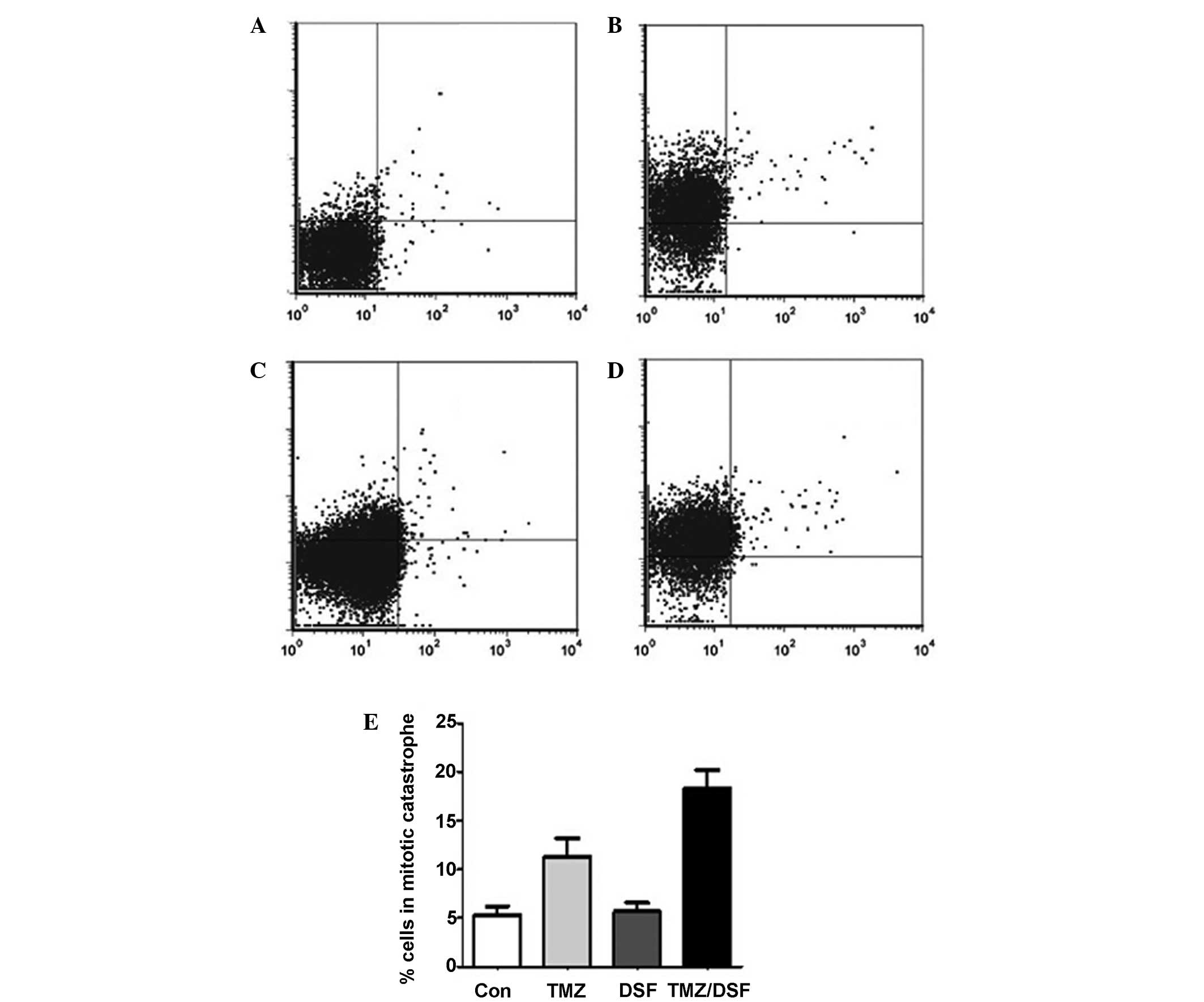|
1
|
Beckers A: Higher prevalence of clinically
relevant pituitary adenomas confirmed. Clin Endocrinol (Oxf).
72:290–291. 2010. View Article : Google Scholar
|
|
2
|
Tamer G, Telci A, Mert M, Uzum AK, Aral F,
Tanakol R, Yarman S, Boztepe H, Colak N and Alagöl F: Prevalence of
pituitary adenomas in macroprolactinemic patients may be higher
than it is presumed. Endocrine. 41:138–143. 2012. View Article : Google Scholar
|
|
3
|
Karavitaki N: Prevalence and incidence of
pituitary adenomas. Ann Endocrinol (Paris). 73:79–80. 2012.
View Article : Google Scholar
|
|
4
|
Ezzat S, Asa SL, Couldwell WT, Barr CE,
Dodge WE, Vance ML and McCutcheon IE: The prevalence of pituitary
adenomas: a systematic review. Cancer. 101:613–619. 2004.
View Article : Google Scholar : PubMed/NCBI
|
|
5
|
Selman WR, Laws ER Jr, Scheithauer BW and
Carpenter SM: The occurrence of dural invasion in pituitary
adenomas. J Neurosurg. 64:402–407. 1986. View Article : Google Scholar : PubMed/NCBI
|
|
6
|
Scheithauer BW, Kovacs KT, Laws ER Jr and
Randall RV: Pathology of invasive pituitary tumors with special
reference to functional classification. J Neurosurg. 65:733–744.
1986. View Article : Google Scholar : PubMed/NCBI
|
|
7
|
Zemmoura I, Wierinckx A, Vasiljevic A, Jan
M, Trouillas J and François P: Aggressive and malignant prolactin
pituitary tumors: pathological diagnosis and patient management.
Pituitary. 16:515–522. 2013. View Article : Google Scholar
|
|
8
|
Levy A: Pituitary disease: presentation,
diagnosis and management. J Neurol Neurosurg Psychiatry. 75(Suppl
3): iii47–52. 2004. View Article : Google Scholar
|
|
9
|
Buchfelder M: Management of aggressive
pituitary adenomas: current treatment strategies. Pituitary.
12:256–260. 2009. View Article : Google Scholar
|
|
10
|
Maïza JC and Caron P: Pituitary carcinomas
and aggressive adenomas: an overview and new therapeutic options.
Ann Endocrinol (Paris). 70(Suppl 1): 12–19. 2009.In French.
View Article : Google Scholar
|
|
11
|
Syro LV, Uribe H, Penagos LC, Ortiz LD,
Fadul CE, Horvath E and Kovacs K: Antitumour effects of
temozolomide in a man with a large, invasive prolactin-producing
pituitary neoplasm. Clin Endocrinol (Oxf). 65:552–553. 2006.
View Article : Google Scholar
|
|
12
|
Neff LM, Weil M, Cole A, Hedges TR,
Shucart W, Lawrence D, Zhu JJ, Tischler AS and Lechan RM:
Temozolomide in the treatment of an invasive prolactinoma resistant
to dopamine agonists. Pituitary. 10:81–86. 2007. View Article : Google Scholar : PubMed/NCBI
|
|
13
|
Mohammed S, Kovacs K, Mason W, Smyth H and
Cusimano MD: Use of temozolomide in aggressive pituitary tumors:
case report. Neurosurgery. 64:E773–774; discussion E774. 2009.
View Article : Google Scholar : PubMed/NCBI
|
|
14
|
Kaltsas GA, Mukherjee JJ, Plowman PN,
Monson JP, Grossman AB and Besser GM: The role of cytotoxic
chemotherapy in the management of aggressive and malignant
pituitary tumors. J Clin Endocrinol Metab. 83:4233–4238. 1998.
View Article : Google Scholar : PubMed/NCBI
|
|
15
|
Zhou PZ, Ma WC, Wang XJ, Cheng SW and
Jiang S: Isolation and preliminary identification of stem-like
cells in pituitary adenoma. Sichuan Da Xue Xue Bao Yi Xue Ban.
44:466–469. 2013.In Chinese. PubMed/NCBI
|
|
16
|
Raverot G, Sturm N and de Fraipont F:
Temozolomide treatment in aggressive pituitary tumors and pituitary
carcinomas: a French multicenter experience. J Clin Endocrinol
Metab. 95:4592–4599. 2010. View Article : Google Scholar : PubMed/NCBI
|
|
17
|
Bush ZM, Longtine JA, Cunningham T, Schiff
D, Jane JA Jr, Vance ML, Thorner MO, Laws ER Jr and Lopes MB:
Temozolomide treatment for aggressive pituitary tumors: correlation
of clinical outcome with O (6)-methylguanine meth-yltransferase
(MGMT) promoter methylation and expression. J Clin Endocrinol
Metab. 95:E280–290. 2010. View Article : Google Scholar : PubMed/NCBI
|
|
18
|
Kovacs K, Scheithauer BW, Lombardero M,
McLendon RE, Syro LV, Uribe H, Ortiz LD and Penagos LC: MGMT
immunoexpression predicts responsiveness of pituitary tumors to
temozolomide therapy. Acta Neuropathol. 115:261–262. 2008.
View Article : Google Scholar
|
|
19
|
Chen W, Xiao Z, Zhao Y, Huang L and Du G:
HIF-1α inhibition sensitizes pituitary adenoma cells to
temozolomide by regulating MGMT expression. Oncol Rep.
30:2495–2501. 2013.PubMed/NCBI
|
|
20
|
Paranjpe A, Zhang R, Ali-Osman F, Bobustuc
GC and Srivenugopal KS: Disulfiram is a direct and potent inhibitor
of human O6-methylguanine-DNA methyltransferase (MGMT) in brain
tumor cells and mouse brain and markedly increases the alkylating
DNA damage. Carcinogenesis. 35:692–702. 2014. View Article : Google Scholar :
|
|
21
|
Xu Q, Yuan X, Tunici P, et al: Isolation
of tumour stem-like cells from benign tumours. Br J Cancer.
101:303–311. 2009. View Article : Google Scholar : PubMed/NCBI
|
|
22
|
Wang X, Ma Z, Xiao Z, Liu H, Dou Z, Feng X
and Shi H: Chk1 knockdown confers radiosensitization in prostate
cancer stem cells. Oncol Rep. 28:2247–2254. 2012.PubMed/NCBI
|
|
23
|
Xiao Z, Liu Q, Mao F, Wu J and Lei T:
TNF-α-induced VEGF and MMP-9 expression promotes hemorrhagic
transformation in pituitary adenomas. Int J Mol Sci. 12:4165–4179.
2011. View Article : Google Scholar
|
|
24
|
Xiao Z, Liu Q, Zhao B, Wu J and Lei T:
Hypoxia induces hemorrhagic transformation in pituitary adenomas
via the HIF-1α signaling pathway. Oncol Rep. 26:1457–1464.
2011.PubMed/NCBI
|
|
25
|
Yang J, Xiao Z, Li T, Gu X and Fan B:
Erythropoietin promotes the growth of pituitary adenomas by
enhancing angiogenesis. Int J Oncol. 40:1230–1237. 2012.
|
|
26
|
Wang X, Ma Z, Xiao Z, Liu H, Dou Z, Feng X
and Shi H: Chk1 knockdown confers radiosensitization in prostate
cancer stem cells. Oncol Rep. 28:2247–2254. 2012.PubMed/NCBI
|
|
27
|
Chen W, Xiao Z, Zhao Y, Huang L and Du G:
HIF-1α inhibition sensitizes pituitary adenoma cells to
temozolomide by regulating MGMT expression. Oncol Rep.
30:2495–2501. 2013.PubMed/NCBI
|
|
28
|
O’Reilly SM, Newlands ES, Glaser MG, et
al: Temozolomide: a new oral cytotoxic chemotherapeutic agent with
promising activity against primary brain tumours. Eur J Cancer.
29A:940–942. 1993. View Article : Google Scholar
|
|
29
|
Castedo M, Perfettini JL, Roumier T,
Andreau K, Medema R and Kroemer G: Cell death by mitotic
catastrophe: a molecular definition. Oncogene. 23:2825–2837. 2004.
View Article : Google Scholar : PubMed/NCBI
|
|
30
|
Bocangel DB, Finkelstein S, Schold SC,
Bhakat KK, Mitra S and Kokkinakis DM: Multifaceted resistance of
gliomas to temozolomide. Clin Cancer Res. 8:2725–2734.
2002.PubMed/NCBI
|
|
31
|
Cen D, Brayton D, Shahandeh B, Meyskens FL
Jr and Farmer PJ: Disulfiram facilitates intracellular Cu uptake
and induces apoptosis in human melanoma cells. J Med Chem.
47:6914–6920. 2004. View Article : Google Scholar : PubMed/NCBI
|
|
32
|
Cvek B: Targeting malignancies with
disulfiram (Antabuse): multidrug resistance, angiogenesis and
proteasome. Curr Cancer Drug Targets. 11:332–337. 2011. View Article : Google Scholar : PubMed/NCBI
|
|
33
|
Triscott J, Lee C, Hu K, et al:
Disulfiram, a drug widely used to control alcoholism, suppresses
the self-renewal of glioblastoma and over-rides resistance to
temozolomide. Oncotarget. 3:1112–1123. 2012.PubMed/NCBI
|
|
34
|
Johansson B: A review of the
pharmacokinetics and pharmacodynamics of disulfiram and its
metabolites. Acta Psychiatr Scand Suppl. 369:15–26. 1992.
View Article : Google Scholar : PubMed/NCBI
|
|
35
|
McCormack AI, McDonald KL, Gill AJ, et al:
Low O6-methylguanine-DNA methyltransferase (MGMT) expression and
response to temozolomide in aggressive pituitary tumours. Clin
Endocrinol (Oxf). 71:226–233. 2009. View Article : Google Scholar
|
|
36
|
Gerson SL: MGMT: its role in cancer
aetiology and cancer therapeutics. Nat Rev Cancer. 4:296–307. 2004.
View Article : Google Scholar : PubMed/NCBI
|
|
37
|
Widhalm G, Wolfsberger S, Preusser M,
Woehrer A, Kotter MR, Czech T, Marosi C and Knosp E: O
(6)-methylguanine DNA methyltransferase immunoexpression in
nonfunctioning pituitary adenomas: are progressive tumors potential
candidates for temozolomide treatment. Cancer. 115:1070–1080. 2009.
View Article : Google Scholar : PubMed/NCBI
|
|
38
|
Syljuåsen RG, Sørensen CS, Hansen LT,
Fugger K, Lundin C, Johansson F, Helleday T, Sehested M, Lukas J
and Bartek J: Inhibition of human Chk1 causes increased initiation
of DNA replication, phosphorylation of ATR targets and DNA
breakage. Mol Cell Biol. 25:3553–3562. 2005. View Article : Google Scholar
|
|
39
|
Sorensen CS, Hansen LT, Dziegielewski J,
Syljuåsen RG, Lundin C, Bartek J and Helleday T: The cell-cycle
checkpoint kinase Chk1 is required for mammalian homologous
recombination repair. Nat Cell Biol. 7:195–201. 2005. View Article : Google Scholar : PubMed/NCBI
|
|
40
|
Bahassi EM, Ovesen JL, Riesenberg AL,
Bernstein WZ, Hasty PE and Stambrook PJ: The checkpoint kinases
Chk1 and Chk2 regulate the functional associations between hBRCA2
and Rad51 in response to DNA damage. Oncogene. 27:3977–3985. 2008.
View Article : Google Scholar : PubMed/NCBI
|
|
41
|
Beck-Peccoz P, Lania A, Beckers A,
Chatterjee K and Wemeau JL: 2013 European thyroid association
guidelines for the diagnosis and treatment of thyrotropin-secreting
pituitary tumors. Eur Thyroid J. 2:76–82. 2013.2013. View Article : Google Scholar
|
|
42
|
Kovacs K, Horvath E, Syro LV, Uribe H,
Penagos LC, Ortiz LD and Fadul CE: Temozolomide therapy in a man
with an aggressive prolactin-secreting pituitary neoplasm:
Morphological findings. Hum Pathol. 38:185–189. 2007. View Article : Google Scholar
|
|
43
|
Wickström M, Danielsson K, Rickardson L,
Gullbo J, Nygren P, Isaksson A, Larsson R and Lövborg H:
Pharmacological profiling of disulfiram using human tumor cell
lines and human tumor cells from patients. Biochem Pharmacol.
73:25–33. 2007. View Article : Google Scholar
|
|
44
|
Chen D, Cui QC, Yang H and Dou QP:
Disulfiram, a clinically used anti-alcoholism drug and
copper-binding agent, induces apoptotic cell death in breast cancer
cultures and xenografts via inhibition of the proteasome activity.
Cancer Res. 66:10425–10433. 2006. View Article : Google Scholar : PubMed/NCBI
|
|
45
|
Rizzoti K: Adult pituitary
progenitors/stem cells: from in vitro characterization to in vivo
function. Eur J Neurosci. 32:2053–2062. 2010. View Article : Google Scholar : PubMed/NCBI
|
|
46
|
Florio T: Adult pituitary stem cells: from
pituitary plasticity to adenoma development. Neuroendocrinology.
94:265–277. 2011. View Article : Google Scholar : PubMed/NCBI
|
|
47
|
Visvader JE and Lindeman GJ: Cancer stem
cells in solid tumours: accumulating evidence and unresolved
questions. Nat Rev Cancer. 8:755–768. 2008. View Article : Google Scholar : PubMed/NCBI
|
|
48
|
Eyler CE and Rich JN: Survival of the
fittest: cancer stem cells in therapeutic resistance and
angiogenesis. J Clin Oncol. 26:2839–2845. 2008. View Article : Google Scholar : PubMed/NCBI
|
|
49
|
Fernandez A, Karavitaki N and Wass JA:
Prevalence of pituitary adenomas: a community-based,
cross-sectional study in Banbury (Oxfordshire, UK). Clin Endocrinol
(Oxf). 72:377–382. 2010. View Article : Google Scholar
|
















